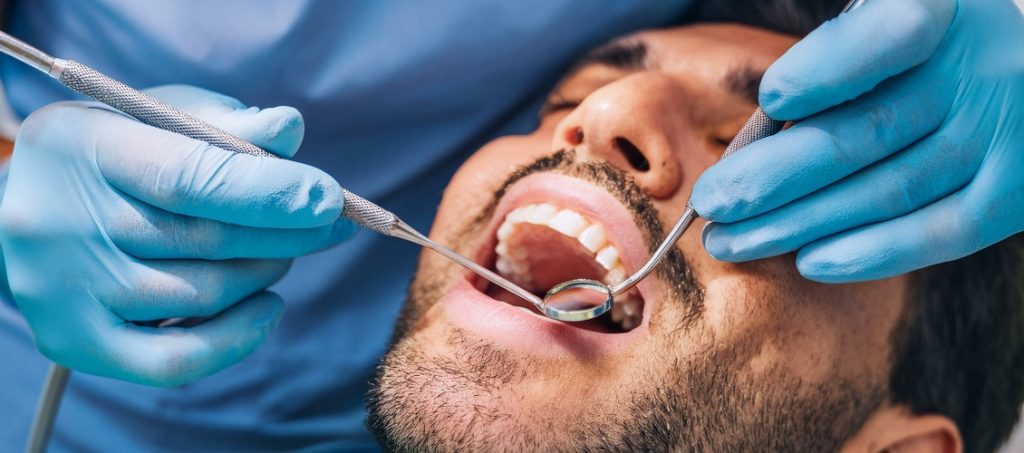Ever had sudden tooth pain ruin your day,, or worse, knock a tooth out during dinner? Dental emergencies can be stressful and painful, especially when you’re unsure of what to do next. In this blog, we’ll walk you through 7 common dental emergencies and how to handle them, so you’re prepared when the unexpected strikes. From cracked teeth to dental abscesses, knowing when and how to act could save your smile, and save you from serious complications.
What Counts as a Dental Emergency?
A dental emergency involves any condition that requires immediate attention to relieve pain, stop bleeding, or save a tooth. These are situations where waiting can worsen the problem or even make recovery impossible. If you’re dealing with swelling, infection, bleeding, or trauma, don’t second guess it.
Examples of dental emergencies include:
Knocked-out or loose teeth from injury
Severe and persistent toothaches
Swelling in your face or jaw
Signs of infection like pus or a foul taste
Uncontrolled bleeding
Cracked teeth causing significant pain
If any of these happen, it’s time to call an emergency dentist right away.
The 7 Most Common Dental Emergencies and How to Handle Them
1. Severe Toothache
A relentless, throbbing toothache is often a sign of deep decay or infection. It may come with swelling, fever, or even a foul taste if an abscess is forming.
What to do:
Rinse your mouth with warm salt water
Take over-the-counter pain relievers like ibuprofen (never apply aspirin directly to gums!)
Avoid very hot, cold, or sugary foods
Call your dentist immediately especially if the pain is worsening or waking you up at night.
2. Knocked-Out Tooth
One of the most urgent dental emergencies, a knocked-out tooth can sometimes be saved—if you act fast. Ideally, re-implantation should happen within 30–60 minutes.
What to do:
Pick up the tooth by the crown (not the root!)
Gently rinse, but don’t scrub
Keep it moist—in milk, saline, or your own saliva
Call your emergency dentist and head over ASAP
Time is your best friend here. Quick action means better chance of saving the tooth.
3. Cracked or Broken Tooth
Whether from a bite gone wrong or a surprise collision, cracked teeth can lead to infection or further damage if ignored.
What to do:
Rinse your mouth with warm water
Save any pieces of the tooth
Apply a cold compress to reduce swelling
Avoid chewing on the affected side
Call your dentist right away for evaluation. Even painless cracks can expose the nerve and lead to complications later.

4. Dental Abscess
An abscess is a pocket of pus caused by bacterial infection. It’s dangerous and can even become life-threatening if the infection spreads.
Symptoms:
Swelling in the gums or face
Persistent pain
Fever
Pus discharge or foul taste
What to do:
Rinse with warm salt water
Use a cold compress on the face
Seek emergency dental care immediately
Never attempt to drain an abscess at home. It needs professional treatment.
5. Lost Filling or Crown
This might not seem urgent, but exposed inner tooth structures can be vulnerable to pain and infection.
What to do:
Use temporary dental cement (available at pharmacies) or sugar-free gum to cover the area
Avoid chewing on that side
Schedule a dental visit soon
If you’re experiencing pain, this qualifies as a dental emergency and needs quicker attention.
6. Object Lodged Between Teeth
From popcorn kernels to fragments of food, anything stuck between your teeth that’s causing pain or swelling needs proper care.
What to do:
Try flossing gently
Rinse your mouth with warm water
Avoid using pins or sharp tools
If you can’t remove the object and discomfort persists, it could be pressing into your gum or causing inflammation, call your dentist.

7. Bleeding or Injured Soft Tissues
Injuries to your lips, cheeks, gums, or tongue especially those that won’t stop bleeding can become serious quickly.
What to do:
Apply pressure with clean gauze or cloth
Use a cold compress to reduce swelling
See a dentist if bleeding continues beyond 15 minutes
Mouth injuries can look worse than they are, but they still need evaluation to rule out deeper damage.
How to Handle Dental Emergencies at Home?
While you should always seek professional dental care, knowing how to handle dental emergencies at home can minimize damage and pain.
Here are smart first-aid steps:
Knocked-out tooth? Store it in milk and get to the dentist fast.
Bleeding? Apply pressure and use gauze.
Swelling or abscess? Use a cold compress and rinse with salt water.
Toothache? Use OTC pain meds, never aspirin directly on gums.
Stay calm, act quickly, and call your emergency dentist. These are temporary solutions, not substitutes for care.
What’s NOT a Dental Emergency?
Most people don’t expect a dental emergency until they’re in the middle of one. Take these simple steps now so you’re not caught off guard:
Save your dentist’s emergency number in your phone
Keep a small dental emergency kit with gauze, dental wax, pain relievers, and a small container for a knocked-out tooth
Know your symptoms and don’t delay care
Early action often means less pain, lower costs, and better outcomes.
Why Skyline Dental Is Your Partner in Any Dental Crisis?
When it comes to common dental emergencies, Skyline Dental Associates is your trusted local provider. Whether you’re dealing with intense pain, infection, or a dental injury, we offer same-day urgent dental treatment and compassionate care every step of the way.
We’ve seen it all, from surprise sports injuries to severe abscesses, and we’re ready to help restore your smile and peace of mind.
Not sure if your dental issue is an emergency? Don’t wait and risk it, contact Skyline Dental now for expert help, same-day care, and support when you need it most.

